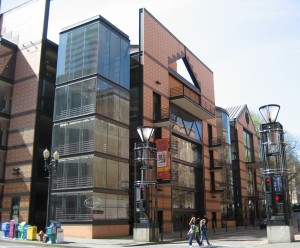 I’m not sure why I’m so fascinated by the problems of classical music. Possibly it’s just that it’s hard not to root for an art form that seems to be running so against the drift of the culture itself. I say seems not to waffle but to suggest that it’s not too late for a little adaptation.
I’m not sure why I’m so fascinated by the problems of classical music. Possibly it’s just that it’s hard not to root for an art form that seems to be running so against the drift of the culture itself. I say seems not to waffle but to suggest that it’s not too late for a little adaptation.
A William Weir story in the Chicago Tribune today starts with an account of the difficulty composer Kenneth Fuchs has broadcasting his music out into the world — and Fuchs is well-known as far as contemporary composers operating in a “classical” context go. He then suggests that the answer for Fuchs may be to get his music out of the “classical confines.” I disagree with him that the death of classical music stores is a good thing, but his suggestion that the blurring of genre lines that separate classical from other kinds of music does sound right. He then cites a few new-music organizations such as Bang on a Can and the Wordless Music series as examples of moves in the right direction, as well as cellist Matt Haimovitz, who couldn’t be more popular among the country’s few remaining classical music critics because he is so involved in both genre destruction and operating outside traditional classical music confines.
This leads us, inevitably to the Portland Cello Project, which went to the top of Amazon’s classical music chart this weekend per the group’s website. Congrats! I’ve listened to Cello Project’s CD a lot the past couple of months, and it is a movement in genre-blurring all by itself, a mix of hip-hop, folk, indie, old classical and new classical, by turns witty and moving. The PCP invited several other excellent local musicians to play on the record, so if you’ve been lagging behind the local music scene a little bit, the CD helps catch you up.
Maybe it’s simply a matter of what’s in a name. “Classical music” just doesn’t work very well for me. No thanks, I want to say. On the other hand, Mozart’s Quintet in C Major or the Mahler Nine? Huzzah! Right now, I’m listening to one of the concerts in the Worldless Music Festival, via their website (the link’s above). Is it “classical”? Not completely — Chopin and Scriabin, yes, but also French composer Colleen’s eerie music and the indie band Beirut. But it is surprising, complex, engaging to ear and mind and heart. The jump from one form to another isn’t jarring, not in these days of the iPod shuffle. And that perhaps is one of Weir’s points in the Tribune today: Part of our brain wants desperately to categorize things; the other part happily disregards those categories in practice.

